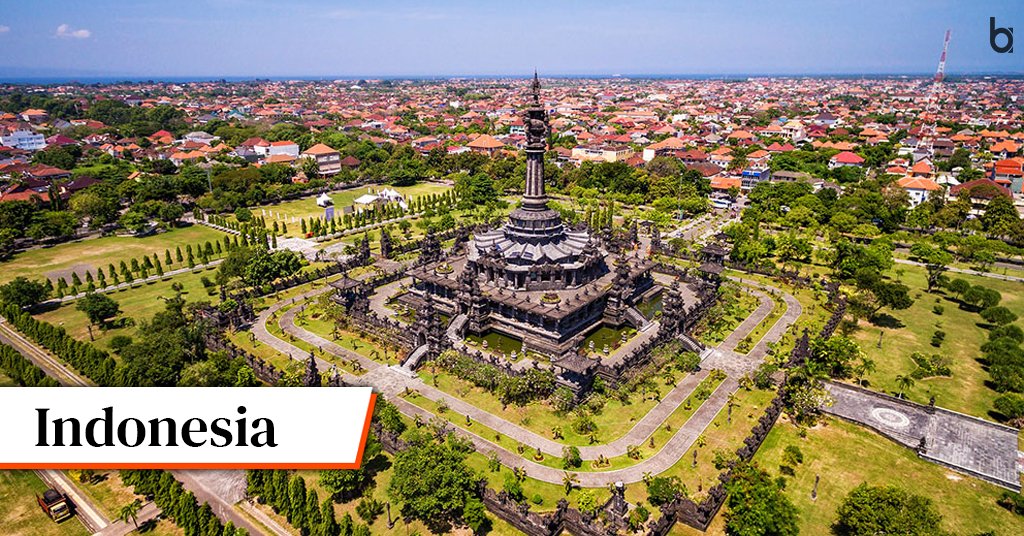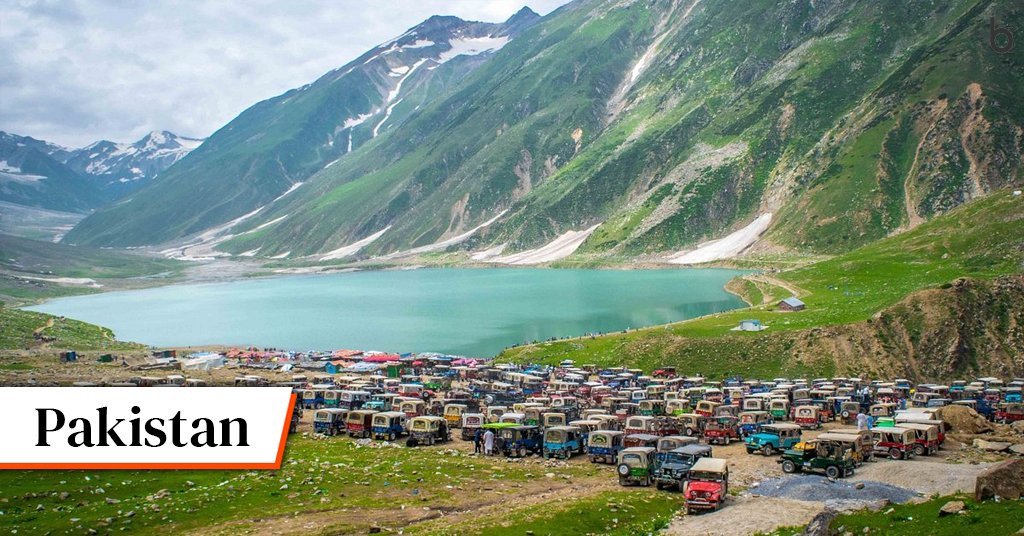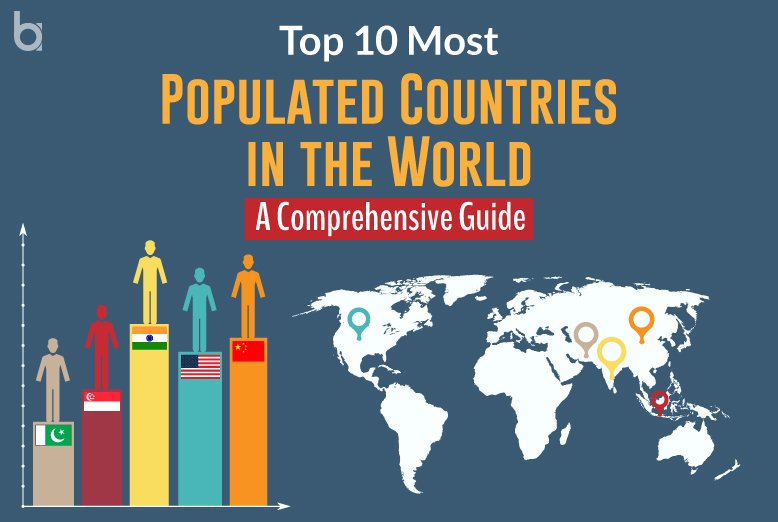The world is home to many countries, but some have much larger populations than others. In this list, we’ll explore the most populated countries in the world as of 2025. Each country stands out for its unique culture, economy, and people. While India has now taken the top spot, China, the United States, and Indonesia closely follow. You’ll discover the fascinating details behind these countries and see why they’re growing so quickly. Whether it’s Asia, Africa, or the Americas, these regions show how diverse and lively the world is. So, let’s dive in and learn more about what makes these countries special!
Here’s the list of the top 10 most populated countries in the world
| Countries | Population |
| India | 1.45 Billion |
| China | 1.41 Billion |
| United States | 345.42 Million |
| Indonesia | 283.48 Million |
| Pakistan | 251.26 Million |
| Nigeria | 232.67 Million |
| Brazil | 211.99 Million |
| Bangladesh | 173.56 Million |
| Russia | 144.82 Million |
| Ethiopia | 132.06 Million |
1. India

- Populated State/City: Uttar Pradesh
- Continent: Asia
India has now overtaken China as the world’s most populated country in the world. You and I are witnessing a historic shift—our country is growing, but not as fast as before. Urbanization and better education are slowing things down, making India’s population trends unique. This change isn’t just a statistic; it affects everything—our jobs, economy, and even daily life.
On the economic front, things are looking strong. We’re seeing industries boom, big infrastructure projects reshape cities, and more jobs opening up. If you’ve noticed fewer people struggling to find work in cities, especially women, that’s because manufacturing is driving real change. And with festivals like Diwali and Eid keeping traditions alive, culture remains as powerful as the economy.
Key Stats:
- Population Growth Rate: 0.92%
- GDP Growth: 8.2%
- Manufacturing Growth: 9.9%
- Projected GDP Growth (FY24/25): 6% – 7%
2. China

- Populated State/City: Guangdong
- Continent: Asia
China, now the world’s second most populated country in the world, is undergoing a major economic shift. You and I are watching this change unfold—its economy is still growing, but not at the pace we expected. The population is declining, the workforce is aging, and living costs are rising. All of this is reshaping the country, influencing everything from job markets to policies that impact daily life.
Despite these challenges, China’s cultural identity is as strong as ever. With 56 recognized ethnic groups and deep-rooted traditions, the idea of “unity in diversity” truly defines the nation. Core values like filial piety and loyalty continue to shape how people live and interact, blending ancient customs with the demands of a rapidly changing world.
Key Stats:
- GDP Growth in 2023: 5.2%
- Projected GDP Growth for 2024: 4.8%
- Estimated GDP Growth for 2025: 4.5%
- Population Decline Rate: 0.03%
- Population Loss in 2023: 2.08 million
3. United States

- Populated State/City: California
- Continent: North America
The most populated countries in the world each bring something unique to the global economy, and the United States is a prime example. As of 2024, the U.S. continues to lead as the world’s largest economy by nominal GDP, while also securing the second position by purchasing power parity. This country’s economic engine relies heavily on consumer spending, which makes up a massive chunk of its overall activity. If you look closely, the U.S. contributes a significant portion to the global economy, which directly impacts all of us.
With millions in its population, the U.S. is growing steadily, and its diversity is something to admire—thanks to high immigration rates. Over 80% of Americans live in urban areas, shaping a vibrant, dynamic society. As one of the largest populations, the U.S. continues to influence both cultural trends and economic policies worldwide.
Key Stats:
- Nominal GDP: $26.7 trillion
- GDP Growth Rate: 0.53%
- Urban Population: 83%
- Consumer Spending: 68% of GDP
- Global Economy Share: 26%
4. Indonesia

- Populated State/City: Java
- Continent: Asia
Indonesia stands tall as one of the most populated countries in the world, and its economy is making waves globally. In 2024, the country continued its steady economic rise, driven by key industries like palm oil, coal, and electronics. Despite challenges like inflation, Indonesia’s growth remains strong, showing the resilience of its people and industries. You can see this strength in everyday life—from bustling markets to expanding urban centers, the nation is evolving rapidly.
With over 300 ethnic groups, Indonesia’s rich cultural diversity shines through. The majority of its people practice Islam, shaping traditions, festivals, and daily interactions. From music to dance, the country blends modern influences with deep-rooted heritage, creating a unique cultural landscape.
Key Stats:
- GDP Size: 20.892 quadrillion rupiah ($1.371 trillion)
- Global Economic Rank: 16th largest
- Annual GDP Growth Projection (2024-2026): 5.1%
- Q1 2024 GDP Growth: 5.11% year-on-year
- Inflation Rate: 2.6%
- Population Growth Rate: 0.82%
- Muslim Population Share: 87.06%
5. Pakistan

- Populated State/City: Punjab
- Continent: Asia
Pakistan’s economy is at a turning point, facing both challenges and opportunities. As we can see how rising costs and economic shifts impact daily life, from businesses to household budgets. After a contraction in 2023, the country is now on a path to recovery, aiming for gradual but steady growth. While GDP per capita remains below the global average, Pakistan’s resilience and diverse industries hold promise for future development.
Beyond economics, Pakistan’s cultural richness stands out. Home to a vast mix of ethnic groups, languages, and traditions, the country thrives on its deep-rooted heritage. Festivals, music, and cuisine reflect the dynamic identity of one of the world’s most populated nations, where tradition meets modern ambition.
Key Stats:
- Nominal GDP: USD 339 billion
- Projected Nominal GDP: USD 374 billion
- GDP Per Capita: USD 1,464 (Global Average: USD 10,589)
- Economic Growth Rate (Last Decade): ~4.0% annually
- GDP Contraction: -0.2%
- Projected GDP Growth:
- 2025: 3.9%
- 2026: 5.0%
- Population Growth Rate: 1.96% (Down from 1.98% in 2023)
6. Nigeria

- Populated State/City: Lagos
- Continent: Africa
Nigeria’s economy is evolving, and we the world are witnessing its transformation firsthand. As Africa’s most populated country, its rapid growth presents both opportunities and challenges. With a diverse and youthful population, Nigeria’s potential is undeniable, fueling industries like manufacturing, technology, and financial services. But growth also brings pressure—on infrastructure, resources, and governance.
Beyond the economy, Nigeria’s cultural landscape is just as dynamic. Imagine a nation where over 300 ethnic groups and 500 languages coexist, creating a melting pot of traditions, music, and ideas. This diversity drives innovation and resilience but also sparks debates on resource distribution and political stability.
Key Stats:
- Population Growth Rate: 2.42%
- Most Populated Country in Africa
- Nominal GDP Rank: 39th globally
- GDP Growth:
- Q1 2024: 2.98%
- Q2 2024: 3.19%
7. Brazil

- Populated State/City: São Paulo
- Continent: South America
Brazil isn’t just a country—it’s a powerhouse of culture, economy, and resilience. We are sighting an economy that, despite its challenges, keeps pushing forward. With strong consumer spending and strategic fiscal measures, Brazil’s growth outlook remains positive, even as it navigates fiscal deficits. The Finance Ministry’s upgraded forecast for 2024 signals confidence in its economic trajectory.
Beyond numbers, Brazil’s demographic landscape is shifting. While its population growth is steady now, projections indicate a peak before a gradual decline. And let’s not forget Brazil’s rich linguistic tapestry—Portuguese may dominate, but over 180 indigenous and immigrant languages shape its cultural identity. This fusion of history and modernity makes Brazil a global force, both in economic and cultural influence. Last but not the least, if you have noticed, Brazil is the only South American country to make it in the list of the most populated countries in the world.
Key Stats:
- GDP Growth: 2.2% (2025)
- Population Growth Rate: 0.56%
- Projected Peak Population: 229.6 million (by 2045)
8. Bangladesh

- Populated State/City: Dhaka
- Continent: Asia
Bangladesh stands as a testament to resilience and ambition. With one of the most populated countries in the world,, its demographic landscape continues to evolve. While population growth has slightly slowed, the country remains a vibrant mix of cultures, shaped by Islam, Hinduism, Buddhism, and Christianity. Remarkably, 98% of its people identify as Bengali, underscoring a strong national identity.
On the economic front, Bangladesh faces hurdles—rising inflation and a balance of payments deficit create challenges. Yet, the nation remains undeterred. With plans to exit the UN’s Least Developed Countries (LDC) list by 2026 and achieve upper-middle-income status by 2031, the country is pushing forward. Its economy, once peaking at 8.15% growth in 2019, continues to show promise.
Key Stats:
- Population Growth Rate: 1.01%
- GDP Growth Rate Forecast: 5.7%
9. Russia

- Populated State/City: Central Federal District
- Continent: Asia
Russia’s economy is experiencing wartime growth, driven largely by increased military spending. While this boosts short-term figures, it masks deeper economic challenges. Analysts predict a slowdown as sustained defense expenditures and ongoing sanctions weigh on the country’s financial health.
Meanwhile, Russia’s population is undergoing a shift, with a steady decline in recent years placing it in the list of the most populated countries in the world. As ethnic Russians decrease, groups with higher birth rates are growing, altering the country’s demographic landscape. Despite these changes, Russia remains a cultural powerhouse, home to a diverse mix of ethnicities and traditions.
Key Stats:
- GDP Growth Rate: 5.4%
- Projected GDP Growth: 3.6%
- Population Decline Rate: -0.34%
- Ethnic Groups: 195+
10. Ethiopia

- Populated State/City: Oromo
- Continent: Africa
Ethiopia’s economy continues to expand, making it one of Africa’s fastest-growing nations. This progress is fueled by structural reforms, infrastructure projects, and increased investment. However, despite these advancements, the country still faces economic hardships, striving to transition to a lower-middle-income status in the coming years.
Beyond its economy, Ethiopia is home to a diverse and rapidly growing population. With numerous ethnic groups and a rich linguistic heritage, the nation thrives on cultural diversity. Amharic serves as the official language, while other major ethnic groups contribute to Ethiopia’s vibrant traditions.
Key Stats:
- IMF Projected GDP Growth: 6.4%
- Annual Population Growth Rate: 2.52%
- Ethnic Groups: 80+
- Languages Spoken: 87+
- Per capita gross national income: $1,020
Key Takeaways
At first glance, this is just a list of the most populated countries in the world, but look deeper, and you see something bigger. We’re talking about shifting power, economic booms (and slowdowns), and cultures evolving in real-time. Every number tells a story—India rising, China slowing down, and countries like Nigeria and Indonesia stepping into the spotlight.
- India is now the world’s most populated country, and its economic momentum is shaping a new global order. Urbanization is slowing growth rates, but manufacturing is creating new opportunities.
- China’s population is shrinking, and with an aging workforce and rising costs, the world’s second-largest economy is in transition.
- The U.S. remains a global economic powerhouse, driven by consumer spending and immigration-fueled population growth.
- Emerging economies like Nigeria, Pakistan, and Indonesia are becoming key players, balancing rapid growth with economic and political challenges.
- Culture and diversity define these nations, whether it’s Indonesia’s 300+ ethnic groups, Nigeria’s 500 languages, or Brazil’s fusion of indigenous and modern influences.
What’s clear is that population isn’t just a number—it’s a force that shapes economies, cultures, and the future of entire nations. And as we step into 2025, we’re seeing history unfold before our eyes.
FAQs
1. What is the most populated country in the world?
India holds the title of the most populated country globally, with a population exceeding 1.45 billion people as of 2024.
2. Why is India so populated?
India’s high population is due to a combination of historically high fertility rates, social and cultural factors, and economic conditions that have supported large families over generations.
3. Who is the lowest population country?
Vatican City is the world’s least populated country, with an estimated population of just 764 people.
4. How old is India as a country?
India’s history dates back to around 3,000 BCE in official records, but some evidence suggests communities have existed for at least 250,000 years.
5. What is the youngest country?
South Sudan, established in 2011, is recognized as the world’s youngest country.
ALSO READ: 5 Best Airlines in India in 2023











